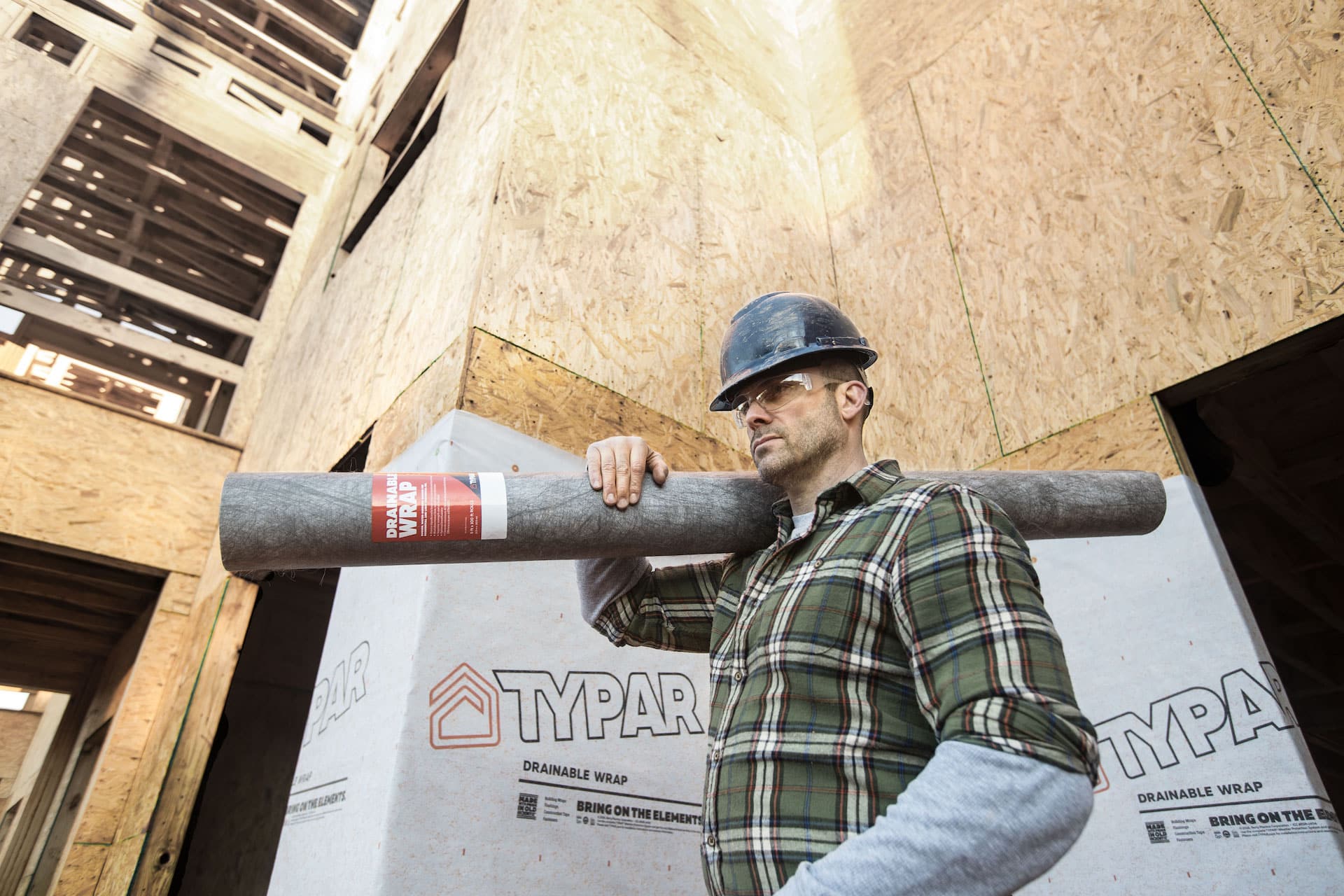
Unliketraditional residential single-family construction, multifamily, light and heavy commercial construction poses unique challenges from a design and build point of view. Firstly, much of commercial construction is specification-based, meaning careful consideration from architects, general contractors, developers and even water consultants must be given to the interaction of products, specifically the transition from one to the next, on a wall assembly. TYPAR’s Weather Protection System encompasses a full lineup of weather-resistive barriers, flashings and tapes that has been tested as a system specifically for the rigors of commercial construction. And it is backed by a 10-year product and labor warranty on new structures four or more stories in height!
Systems in commercial construction are particularly important given their roles in channeling bulk water away from the structure. In recent years, moisture management has rapidly risen in importance for commercial construction teams due to growing awareness of its impact, higher expectations for building performance, and more stringent building codes and regulations. Advancements in building materials and technologies—including high-performance building wraps—and a better understanding of the building science behind these products have also driven the trend.
Commercial buildings often have larger and more complex wall systems than residential buildings, with multiple floors, large windows, and other design features that can increase the risk of water infiltration. As a result, commercial building codes typically require a higher level of water resistance and drainage efficiency for building wraps. At the same time, the growing preference for absorptive cladding materials like fiber cement has made moisture management more important than ever, with some cladding manufacturers even going so far as to require drainage gaps behind their materials.
The International Building Code (IBC) requires that exterior walls include a weather-resistant barrier (WRB) that prevents the accumulation of water within the wall envelope and provides a means for draining water that enters the assembly. Thankfully, advances in building science and the availability of new materials and technologies have made it easier and more cost-effective to achieve these goals.
This includes the development of products like TYPAR DrainableWrap™ Commercial, our first drainable building wrap engineered to protect multi-story structures from the elements and manage excess moisture. Our patented meltshot technology adds an integrated layer of polypropylene fibers to the building wrap that creates a drainage gap between the wrap and exterior sheathing, achieving 96.7% drainage efficiency in channeling wind-driven rain and bulk water away from the structure.
In commercial construction, drainable building wraps are particularly popular for use in high-performance wall systems, such as rainscreens and ventilated façades, which help to improve energy efficiency and manage moisture. Here are a few reasons to incorporate moisture management strategies into your commercial building envelope design.
Maintaining indoor air quality: According to the Environmental Protection Agency (EPA), the average American spends 93% of their life indoors. In the wake of the COVID-19 pandemic, as our homes increasingly serve double duty as offices and classrooms, people have become more aware of indoor air quality issues than ever before.
Building wraps protect healthy indoor air by acting as an air and moisture barrier, which is necessary to avoid mold issues. However, builders and contractors should also consider whether the WRB material is permeable enough to allow any moisture that does enter the walls to escape. Building scientist Joseph Lstiburek advises builders to aim for 10-20 perms when specifying a building wrap, as this “sweet spot” achieves the desired balance of moisture protection and breathability.
Energy efficiency: Uncontrolled moisture can also affect a building's energy efficiency. For example, high humidity levels can make a building feel warmer, which can increase the demand for air conditioning and increase energy consumption.
As part of the air barrier assembly, a building wrap can reduce drafts, increase occupant comfort and reduce energy use by decreasing the amount of non-conditioned air entering and exiting conditioned wall cavities. In fact, according to the Department of Energy and ENERGY STAR®, continuous air barriers such as TYPAR building wraps could reduce energy costs by as much as 15% to 20%.
Preventing structural damage: In addition to its potential impact on a building’s interior environment, moisture can cause structural damage to buildings over time. If moisture infiltrates building materials such as wood or concrete, it can cause them to rot, warp, or weaken. This can compromise the structural integrity of the building and potentially lead to safety hazards.
Considering all the ways moisture can wreak havoc on your commercial project, the benefits of a well-designed building envelope that incorporates water holdout and drainage strategies are clear. Proper moisture management is essential in commercial construction to ensure the safety, durability and longevity of the building, as well as the health and comfort of its occupants.
For everything you need to know about installing the TYPAR Weather Protection System on your next commercial project, including product specs, relevant code and warranty information, check out our new commercial guide to TYPAR Weather Protection System.